39 reading food labels cholesterol
How to Read Everything on the Nutrition Facts Label - Food Network When you take a look toward the top of the Nutrition Facts label you'll see the servings per container and the serving size. Pay close attention to the serving size. Pay close attention to the ... How to read food labels: MedlinePlus Medical Encyclopedia If a label says that a food has 100 mg of sodium, this means it has about 250 mg of salt. You should eat no more than 2,300 mg of sodium per day. This is the amount of sodium that is in 1 measuring teaspoon of table salt. Ask your health care provider if you should have even less. The % daily value is included on the label as a guide.
Reading Food Labels | SeekHealthZ The food label shows the number of grams (g) per serving. This type of fat is the most unhealthy fat for heart health. It is recommended that people limit their intake of trans fat to as little as possible. Look for foods that have "0g Trans Fat" on the label. Cholesterol

Reading food labels cholesterol
How to Read Food Labels : Food Network | Food Network The percent of the Daily Value that is listed on the upper portion of the food label is yet another way to gauge how much saturated fat and cholesterol are in the foods that you buy and... How To Read Cholesterol Labels - HealthyCholesterolClub.com Eating too much unhealthy fat saturated and trans fats can increase your risk for heart disease, high cholesterol, obesity, high blood pressure, type 2 diabetes, and cancer. Saturated fat comes mainly from meat, poultry with skin, whole milk dairy products, coconut and palm kernel oils, and stick margarine. How To Read Nutrition Labels - Mayo Clinic Diet Aim for low in saturated fat, trans fat, cholesterol, sodium, and added sugars. High is 20% or more. Aim high in vitamins, minerals and dietary fiber. 4. Check the ingredients Ingredients are listed by volume. The higher up on the list an ingredient is, the more of it the product contains. Make sure sugar isn't one of the first ingredients listed.
Reading food labels cholesterol. › en › healthy-livingUnderstanding Ingredients on Food Labels | American Heart ... Mar 06, 2017 · These fats raise your bad cholesterol (LDL) and decrease your good cholesterol (HDL). Some experts say you should choose foods with five or fewer ingredients. While this “five-limit rule” has gotten a lot of attention lately, Kris-Etherton said there’s no reason to complicate your label reading to this degree. PDF How do I read food labels? - American Heart Association "Nutrition Facts" Label? (continued) • Trans Fat - is also considered a "bad fat" because it can raise your LDL cholesterol and your risk of heart disease. Choose foods with "0" grams of trans fat. Read the ingredient list to avoid foods that contain "partially hydrogenated" oils. Everyone can benefit from limiting trans fat. Food Labels: Fat & Cholesterol | Home & Garden Information Center The 2015 Dietary Guidelines for Americans recommends the following intakes of fat and cholesterol every day: total fat—20 to 35% of calories, depending on age and gender (65 grams for the 2,000-calorie intake level used in the Daily Value)* saturated fat—less than 10% of calories** trans fat— keep as low as possible › nutrition › how-to-read-food-labelsHow to Read Food Labels Without Being Tricked - Healthline Aug 19, 2020 · Reading labels can be tricky. Consumers are more health-conscious than ever, so some food manufacturers use misleading tricks to convince people to buy highly processed and unhealthy products.
PDF A Guide to Reading Food Labels - University of Rochester Food Labels Reading food labels can help you make wise food choices. Most foods list nutrition information on the package label, called Nutrition Facts. ... They may raise your blood cholesterol level, which can increase your risk of heart disease. Choose foods containing less than 10% of calories from saturated fat. Should I check the cholesterol on nutrition labels? Major dietary cholesterol contributors — meat, fish, and chicken — often have no label. Having less than 4-6 oz of those per day and less than 2-4 eggs per week will generally keep your cholesterol reasonable. And that's a smart idea anyhow, to leave room for more artery-friendly fruits, veg, whole grains, beans, nuts, seeds, etc." How to Read the Nutrition Facts Label on Packaged Foods - WebMD Limit salt to 2,300 milligrams (about 1 teaspoon) daily. If you have high blood pressure, kidney disease, or diabetes, or are African-American or older than 51, your daily limit is lower: 1,500... Learning To Read Labels :: Diabetes Education Online On a nutrition food label, subtract the fiber from the total carbohydrate amount. When you read food labels, the grams of sugar are already included in the total carbohydrate amount, so you do not need to count this sugar amount separately. The grams of sugar listed include both natural sugars, from fruit or milk, and added sugars.
How to read food labels - Heart Foundation NZ The star rating is calculated using an algorithm that takes into consideration a number of positive and negative nutrients for a particular food. The positive elements include protein, fibre, fruit, vegetable, nut, seed and legume content. The negative elements include energy, sodium, saturated fat, and sugar. kidshealth.org › en › kidsFiguring Out Food Labels (for Kids) - Nemours KidsHealth A food with 5% or less of a nutrient is low in that nutrient. A food with 10%–19% of a nutrient is a good source of that nutrient. A food with 20% or more of a nutrient is high in that nutrient. The information on food labels is based on an average adult diet of 2,000 calories per day. How To Read Food and Beverage Labels - National Institute on Aging Although frozen and canned fruits and vegetables have food labels, fresh varieties often do not. You can find nutrition information for fresh vegetables and fruits on the USDA website. Or you can call the U.S. Department of Agriculture's Food and Nutrition Information Center at 301-504-5414. Understanding percent Daily Value (% DV) How To Read Food Labels - 10 Tips - Pritikin Weight Loss Resort 8. Check the types of fat. Make sure there are no saturated fats, partially hydrogenated fats, or tropical oils in the ingredient list, including lard, butter, coconut, cocoa butter, palm oils, shortening, margarine, chocolate, and whole and part-skim dairy products. They're all damaging to your arteries and heart.
Easy Guide to Understanding Food Labels When You Have High Cholesterol ... This means that your food may contain trans-fat even if the food label says 0 gram. Therefore it's important to check the ingredient list (more on this later). Cholesterol guidelines currently recommend having not more than 300 milligrams of cholesterol per day, and if you have heart disease, aim for less than 200 milligrams per day. 2.
Reading Food Labels - Regional Cardiovascular Rehab - Get heart healthy Use the % daily value to see if the serving size has a little or a lot of a nutrient. As a general rule of thumb, less than 5% is considered "a little", and more than 15% is considered "a lot". For heart health, choose food products that per serving size, have "a little" saturated fat, and "a lot" of fibre. Aim for zero trans-fat.
› article › 380166-why-is-readingWhy Is Reading Food Labels Important? | livestrong Understanding what's in the foods you eat helps you make healthier choices. Checking food labels also makes it easy for you to compare the nutrient content of different options. A healthy diet is crucial throughout your lifetime and paying attention to nutrition labels is a good step toward improving your overall diet.
diabetes.org › reading-food-labelsReading Food Labels | ADA - American Diabetes Association The Nutrition Facts labels on foods are really the key to making the best choices. We'll cover the basics so that these labels make shopping easier for you. You've heard it all. From carb-free to low-carb, to whole and empty carbs, it's hard to know what it all means. Blood sugar highs and lows aren't always easy to understand.
5 tips for decoding food labels - Harvard Health Here are 5 ways to make food labels work for you: Size matters. Serving size is always the first item on the label. All other information is based on that serving size. The servings per container tell you know how many portions are in the whole box, package, or can. Beware: many packages contain more than one serving.
How to Understand and Use the Nutrition Facts Label | FDA Dietary fiber, vitamin D, calcium, iron ad potassium are nutrients on the label that Americans generally do not get the recommended amount of. They are identified as nutrients to get more of....
How to read food labels | healthdirect How to read the Nutrition Information Panel. The Nutrition Information Panel tells you the size of a standard serving of the product and which nutrients are contained in that serving. You can use the label to compare the product with what's in similar packaged foods. Look out for information about: Energy: A kilojoule is a measure of energy.
Reading Food Nutrition Labels 101 and How to Decode Them When a food product contains two grams of saturated fat, these claims are allowed. Cholesterol-free - less than two milligrams of cholesterol and two grams or less of saturated fat per serving. Low cholesterol - 20 milligrams or less of cholesterol and 2 grams or less of saturated fat per serving.
› food-labels › art-20047648Reading food labels: Tips if you have diabetes - Mayo Clinic Look for foods with fats, cholesterol and sodium on the low end of the Daily Value; keep fiber, vitamins and minerals on the high end. If your doctor or registered dietitian recommends more or less than 2,000 calories a day, you may need to adjust the percentage accordingly — or simply use the percentage as a general frame of reference.
Making Sense of Food Labels | ADA - American Diabetes Association Reading labels can help you find these hidden sources and compare the sodium in different foods. Whether you have diabetes or not, 2300 milligrams (mg) or less per day is the general recommendation. If you have high blood pressure, talk with your health care team to find out the best goal for you. List of ingredients
How to Read Food Labels for a Heart-Healthy Diet Omega-3 fatty acid Olive oil Butter What's important to know about the first ingredient listed on a label? It's the healthiest. It's in the largest quantity. It's first due to alphabetical order. What words should I look out for that mean sugar? High-fructose corn syrup Agave nectar Dehydrated cane juice All of the above Previous
How to Tell if Foods Are Low or High Cholesterol - Verywell Health Each food label should include milligrams (mg) of cholesterol per serving. Don't forget to look at the serving size as well. Sometimes products can seem low in cholesterol, but if you eat more than the recommended servings at one sitting, then you can end up consuming a lot more cholesterol than you intended.
› en › healthy-livingUnderstanding Food Nutrition Labels | American Heart Association 1 - Start with the serving information at the top. This will tell you the size of a single serving and the total number of servings per container (package). 2 - Next, check total calories per serving and container. Pay attention to the calories per serving and how many calories you're really consuming if you eat the whole package.
How to read food labels | UF Health, University of Florida Health You should also pay attention to trans fats on any food label. These fats raise "bad" cholesterol and lower your "good" cholesterol. These fats are mostly found in snack foods and desserts. Many fast food restaurants use trans fats for frying. If a food has these fats, the amount will be listed on the label under total fat.
How To Read Nutrition Labels - Mayo Clinic Diet Aim for low in saturated fat, trans fat, cholesterol, sodium, and added sugars. High is 20% or more. Aim high in vitamins, minerals and dietary fiber. 4. Check the ingredients Ingredients are listed by volume. The higher up on the list an ingredient is, the more of it the product contains. Make sure sugar isn't one of the first ingredients listed.
How To Read Cholesterol Labels - HealthyCholesterolClub.com Eating too much unhealthy fat saturated and trans fats can increase your risk for heart disease, high cholesterol, obesity, high blood pressure, type 2 diabetes, and cancer. Saturated fat comes mainly from meat, poultry with skin, whole milk dairy products, coconut and palm kernel oils, and stick margarine.
How to Read Food Labels : Food Network | Food Network The percent of the Daily Value that is listed on the upper portion of the food label is yet another way to gauge how much saturated fat and cholesterol are in the foods that you buy and...

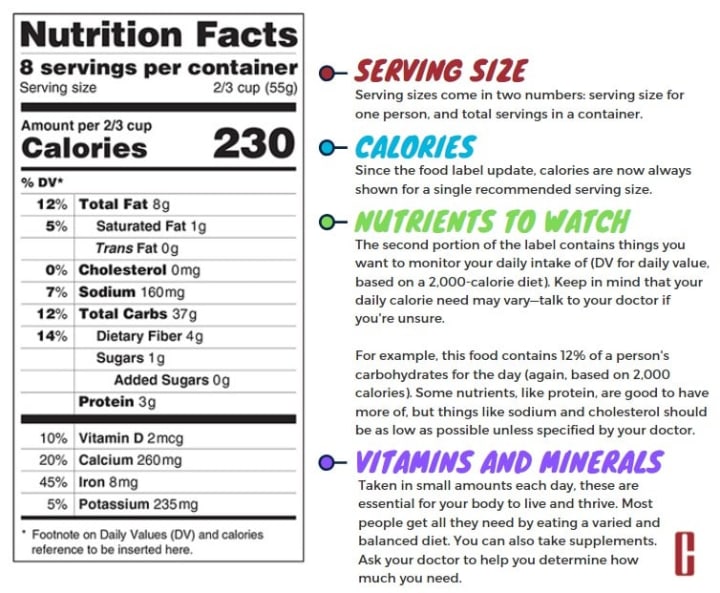

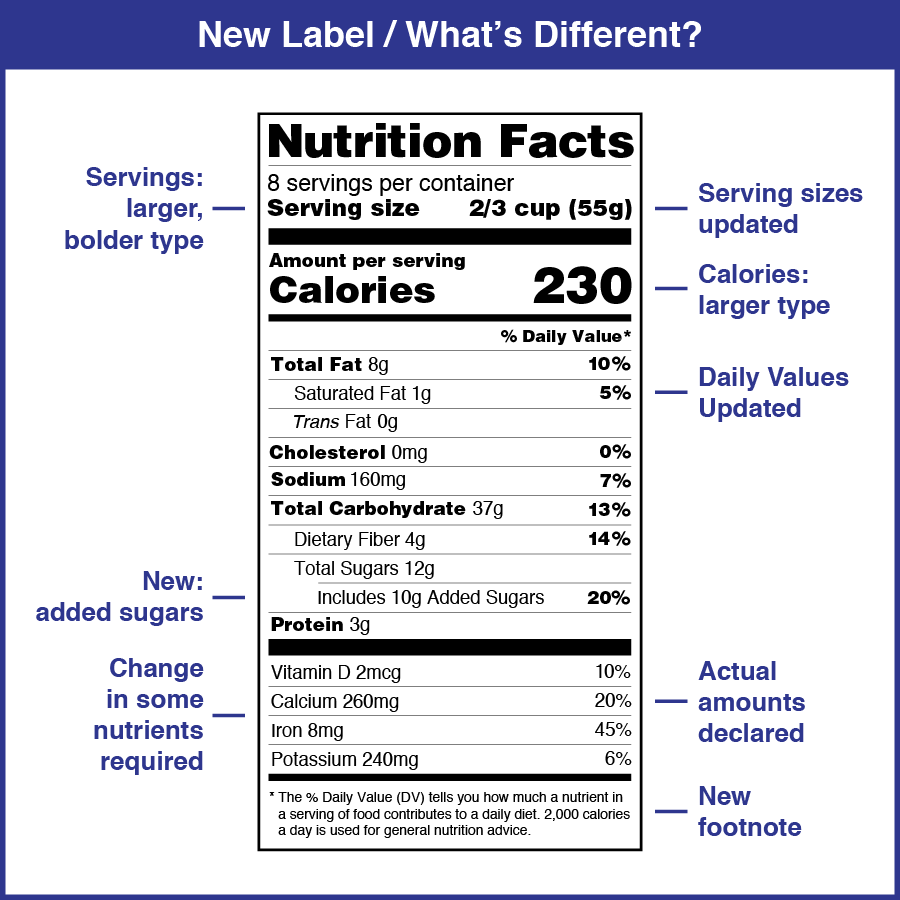

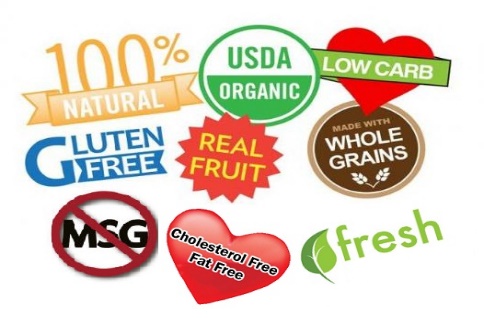





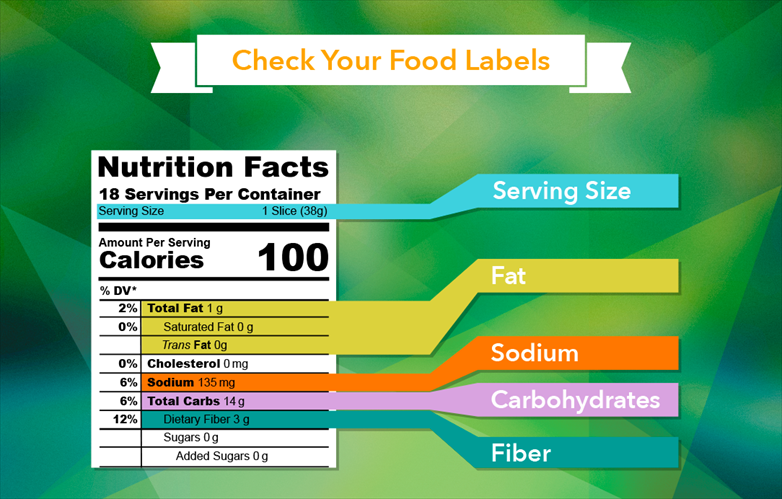



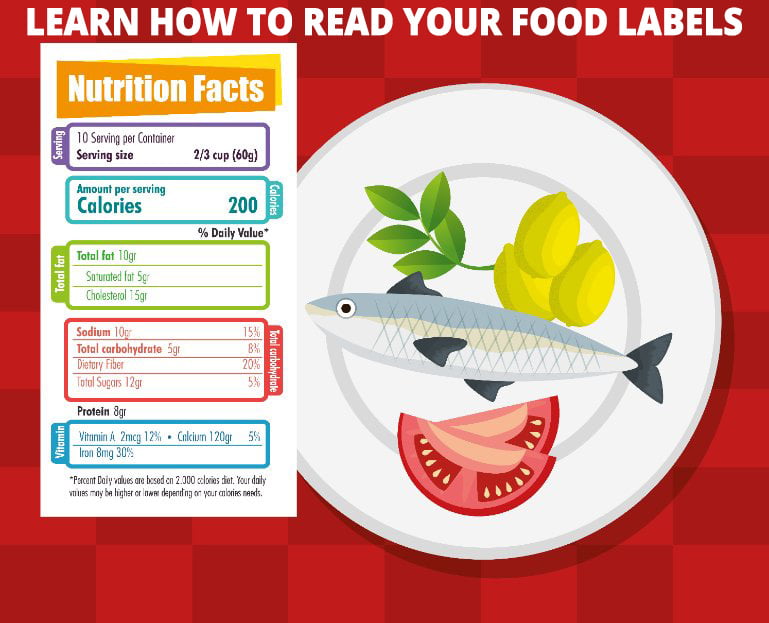


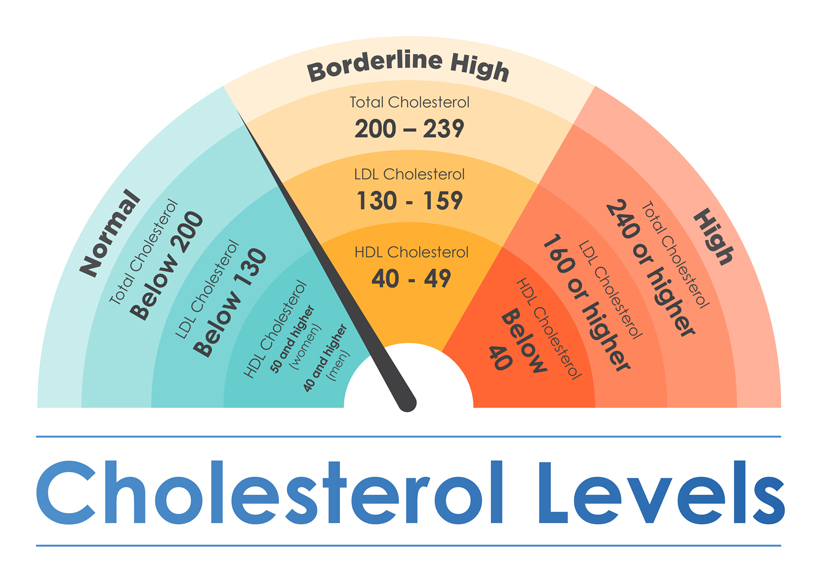






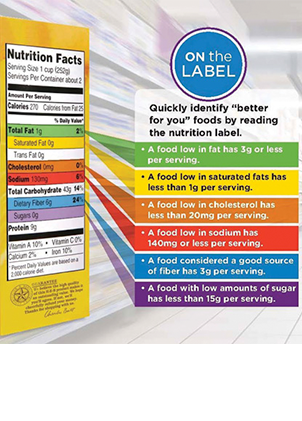



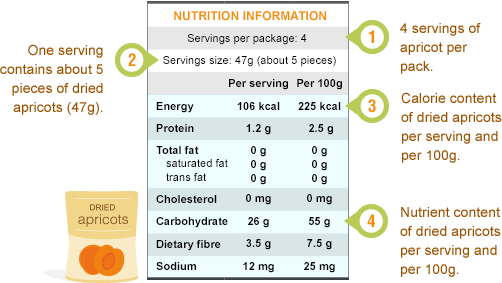

/egg-56d0d4085f9b5879cc7196f6.jpg)



Post a Comment for "39 reading food labels cholesterol"